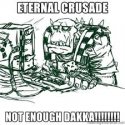A bullet hitting a ceramic plate disintegrates. it doesn’t vaporize. That metal has to go some place. Fragments will often be left of the jacket and core on the surface of a strike face.
Farther more at 10mm or even 50 meters there should be visible deformation of the face of the plate unless the round in question was frangible. In which case it’s pulverized and again will leave flecks of metal across the face. High velocity glitter balls.
This surface is hard to figure what we are looking at.
If this is the back of the plate then it shows minimal deformation and those are just discoloring if the front then no signs of impact which even against this level of armor there should be a blemish and possible flakes.
Which is why I think back.
Edit it is the back and just discoloration.
First based solely on Chinese claims. There has yet to be independent testing.
I have seen video of a 20 inch barreled AR15 firing at commercially available Russian plate with M885A1 ammo and it holds up. But that’s a steel core, M855A1 is anti barrier ammo not AP. It’s meant to punch through car doors and soft barriers.
You had to add Standard because you like I doubt that the PLA has the latest AP rounds from across the world on hand.
And things are given to change.
Remember the “Other major militaries” are not sitting around playing penuckle.
When the Chinese and Russians introduced level 4 plates the US and NATO already had the same on hand.
So everyone is working on better AP, and new standard rounds to.
The US for a time flitted was moving back to 7.62x51mm as standard and seems pretty sure that something between 6.5-7.62 with a hardened core would do the job and still be light enough to field as infantry weapons. The Russians seem to be reintroducing 7.62x54R to their squads. Heck they seem to also have taken a liking to 7.62x51 NATO.
We look around the world and the big Battle rifle tribute bands are a rising star SCAR H, Tavor 7,MSBS-7.62N, SR25, HK417, MPT 76, even the Chinese small arms makers. And then we have emerging odd balls not just the Russian standard 7.62x54R MG but now .338Norma MG and battle class rules in .300wm and .338 Norma.
View attachment 52713
Or they don’t make stand alone plates.
Like the Chinese the US has issued hard plates on top of soft armor after a time they added the soft to the hard and made stand alone plates. This plate may simply be that the PLA being conservative feels that soft carrier with hard plate is better against potential fragmentation and bullets than just one or the other. You also generally want some soft to try and cushion deformation if the rear of the plate. If hit hard enough the armor deforming in the back can kill.
What ever the case everything in science seems to say this is it this is how high it goes. This is the end game of personal armor. We might be able to make it lighter more comfortable but no more protective without encasing future soldiers in powered armor.



